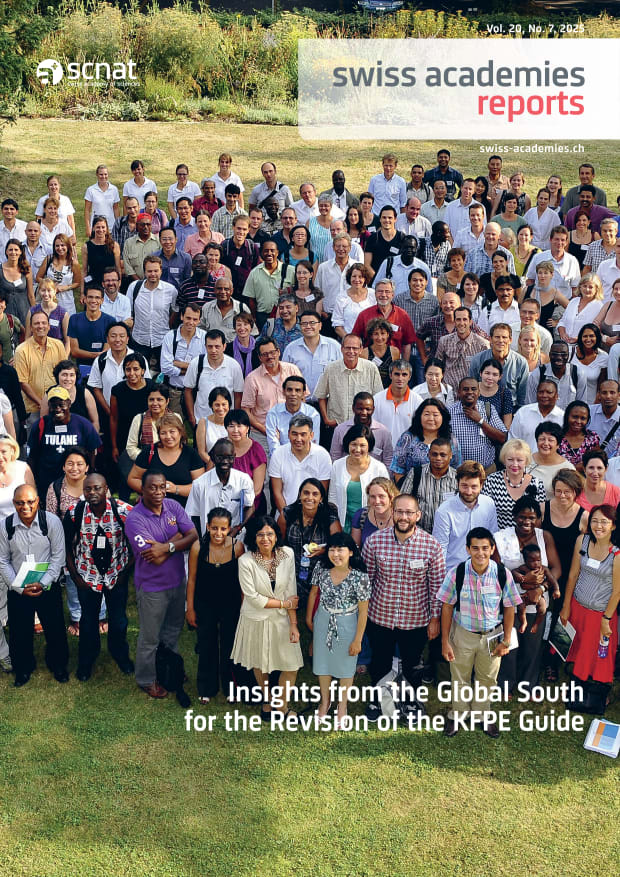Swiss Academies Series
Junge Akademie Schweiz JAS
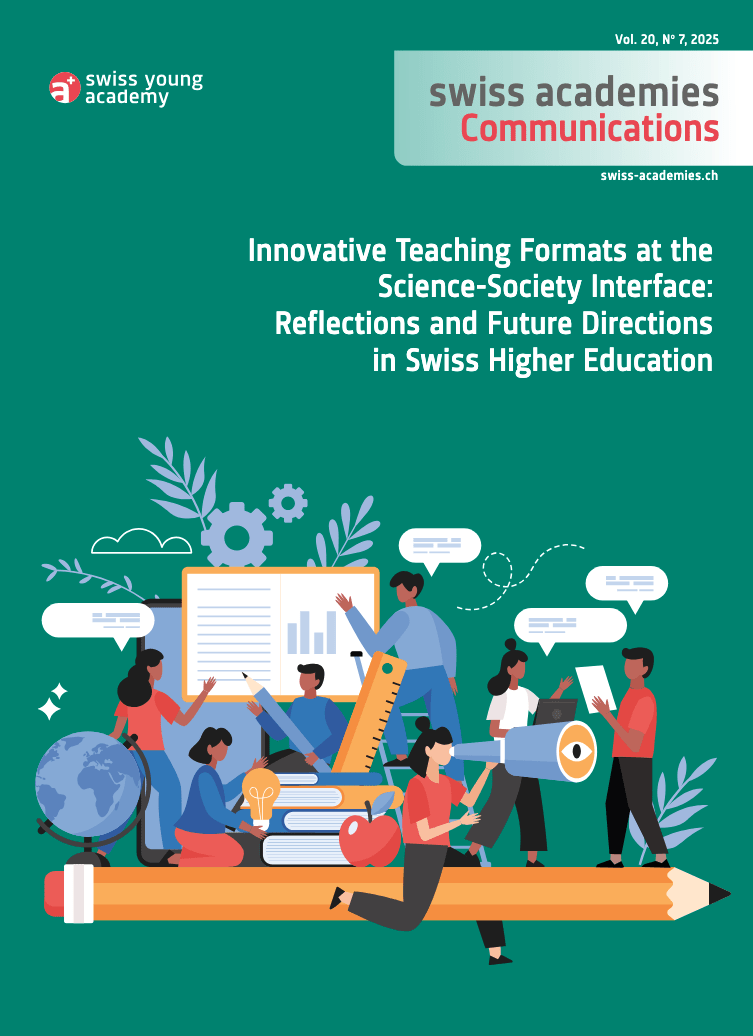
Innovative Teaching Formats at the Science-Society Interface: Reflections and Future Directions in Swiss Higher Education
Science-society dialogue is crucial for addressing pressing societal challenges. One important avenue for strengthening this link, in an inter- and transdisciplinary perspective, is teaching formats that encourage students to engage in the public sphere. However, an illustrative collection of best practices in Swiss higher education has been lacking so far. This practice-driven report draws on a non-exhaustive stocktake of existing courses in Switzerland and participatory workshops among lecturers. It features illustrative examples from Swiss higher education institutions and introduces a new typology of science-society teaching formats, offering educators a structured way to design and analyze courses across six dimensions. In addition, the publication discusses both the opportunities and challenges of implementing such teaching formats. To further advance science-society education, the report identifies three priority areas for action.
Akademien der Wissenschaften Schweiz a+

Saisonale Energiespeicherung im Überblick (Kurzfassung)
Was ist eigentlich saisonale Energiespeicherung? Wie funktioniert sie – und braucht es sie überhaupt in der Schweiz?
Diese Kurzfassung beleuchtet das Thema aus verschiedenen Blickwinkeln. Sie bietet Entscheidungsträger:innen in Politik, Wirtschaft und Verwaltung sowie einer interesierten Öffentlichkeit eine klare und kompakte Übersicht. Ziel ist es, die technologischen und institutionellen Zusammenhänge verständlich darzustellen, die Rolle saisonaler Speicher im Schweizer Energiesystem einzuordnen und die wichtigsten Einflussfaktoren auf den Speicherbedarf aufzuzeigen. Darüber hinaus werden Handlungsoptionen und strategische Stossrichtungen skizziert, die den Weg zu einem langfristig resilienten und saisonal ausgewogenen Energiesystem weisen.
Akademien der Wissenschaften Schweiz a+

Saisonale Energiespeicherung im Überblick (Grundlagenbericht)
Um der Vielschichtigkeit und Komplexität des Themas der saisonalen Energiespeicherung gerecht zu werden, wird es in diesem Grundlagenbericht aus verschiedenen Perspektiven beleuchtet. Es werden Zusammenhänge aufgezeigt, auf Limitationen hingewiesen und die praktische Machbarkeit eingeschätzt, um eine verständliche und umfassende Übersicht zu bieten.
Akademie der Naturwissenschaften Schweiz SCNAT

PFAS: Vorkommen, Risiken und Handlungsansätze
PFAS sind eine grosse Gruppe synthetischer Chemikalien, die in einer Vielzahl von Anwendungen vorkommen. Weil sie sehr stabil sind und über Jahrhunderte in der Umwelt verbleiben, werden sie umgangssprachlich auch «Ewigkeitschemikalien» genannt. Heute lassen sie sich praktisch überall in der Natur und in jedem Menschen nachweisen. Viele PFAS und/oder deren Abbauprodukte sind für Menschen und auch für die Umwelt schädlich. Stetig steigende Konzentrationen und die damit verbundenen Risiken können nur durch einen schrittweisen, koordinierten Ausstieg aus der Anwendung von PFAS und die Reduktion bereits bestehender Belastungen verhindert werden. Dieses Faktenblatt fasst den Stand des Wissens zu PFAS zusammen und zeigt mögliche Handlungsoptionen auf.
Swiss Platform Ageing Society
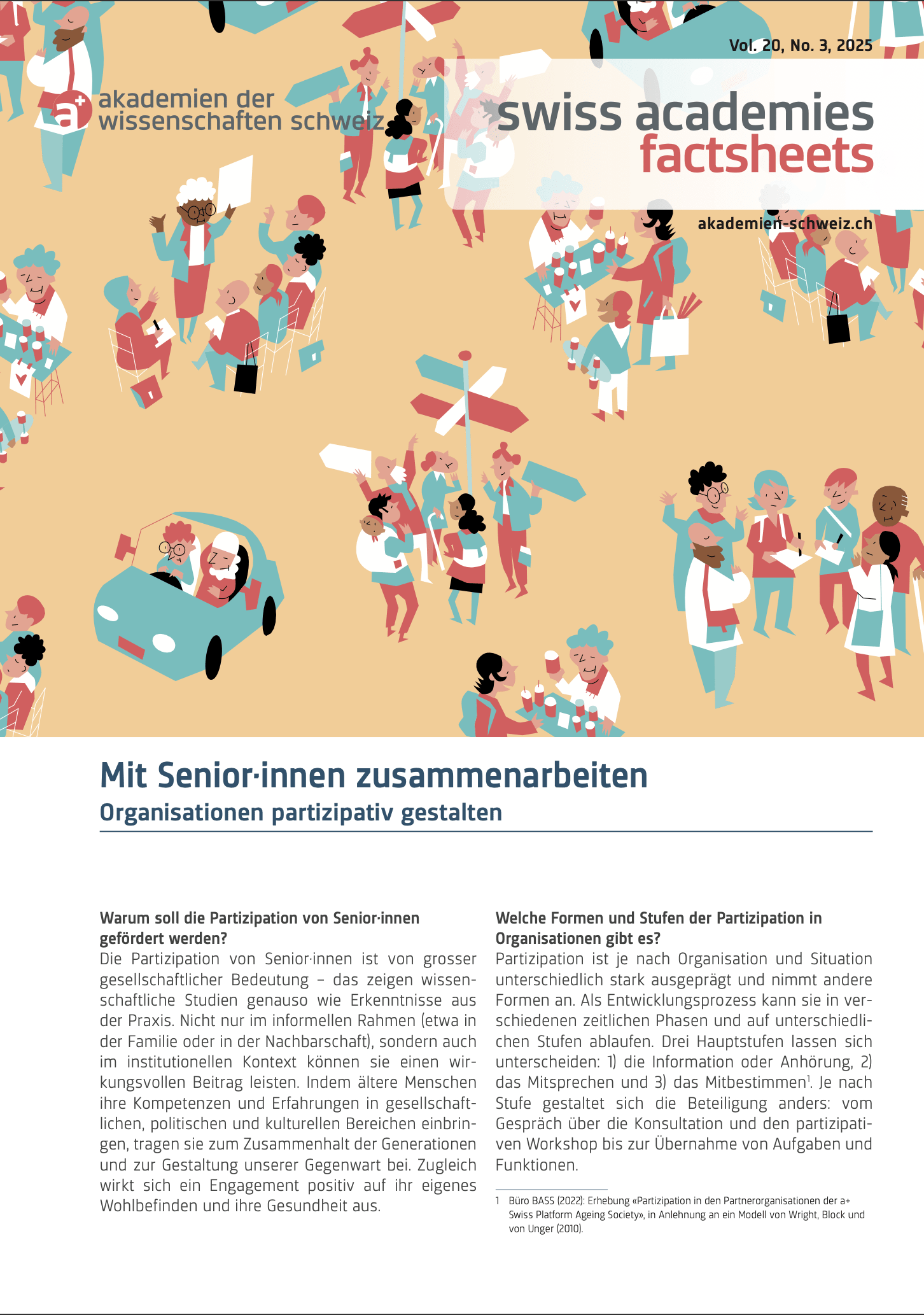
Mit Senior·innen zusammenarbeiten: Eine Checkliste für den Einstieg
Ältere Menschen engagieren sich auf vielfältige Weise in den Organisationen: als Begleitung, logistische Unterstützung, in Gemeinschaftsprojekten, als Koordination oder auch als Vorsitzende. Indem sie ihre Zeit, ihre Kompetenzen und ihre Energie in sinnstiftenden Tätigkeiten einsetzen, leisten sie einen wichtigen Beitrag zum reibungslosen Ablauf vieler Strukturen.
Doch wie kann ihre Partizipation konkret gefördert werden? Worauf ist zu achten?
Das Factsheet enthält eine Checkliste mit zehn wesentlichen Punkten, um Institutionen, Gemeinden und Vereine bei ihren Vorgehensweisen zu unterstützen.
Akademien der Wissenschaften Schweiz a+
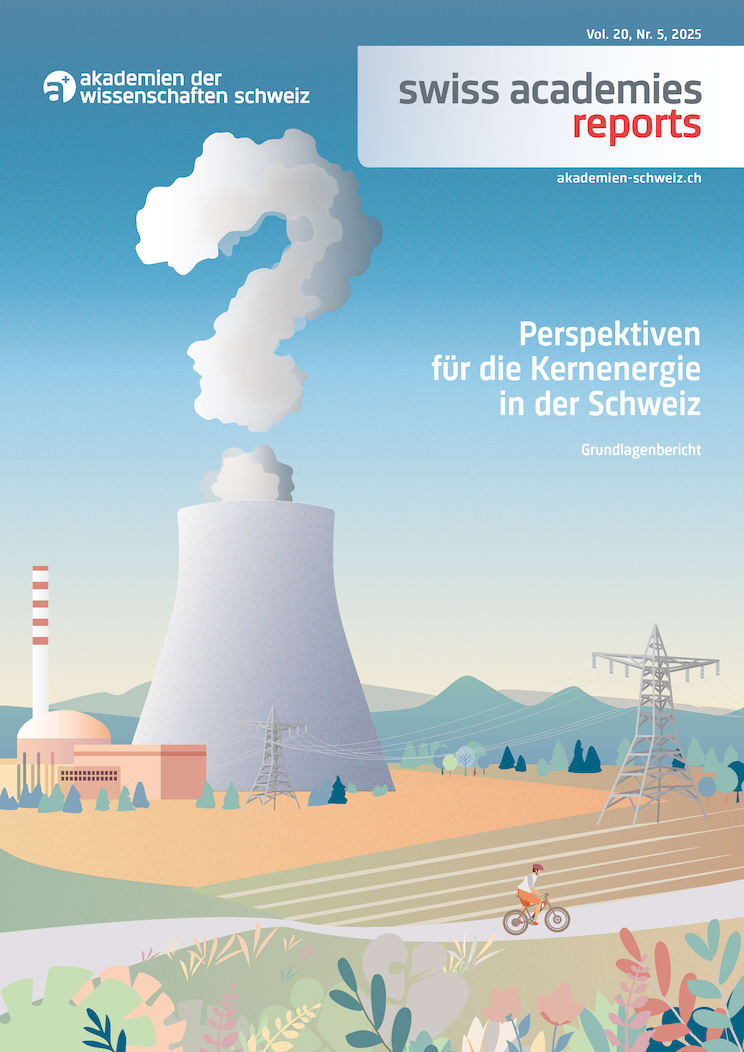
Perspektiven für die Kernenergie in der Schweiz - Grundlagenbericht
Neu U, Markard J, Betz R, Boulouchos K, Pautz A, Stadelmann I (2025)
Perspektiven für die Kernenergie in der Schweiz. Grundlagenbericht.
Swiss Academies Reports 20 (5)
Akademien der Wissenschaften Schweiz a+
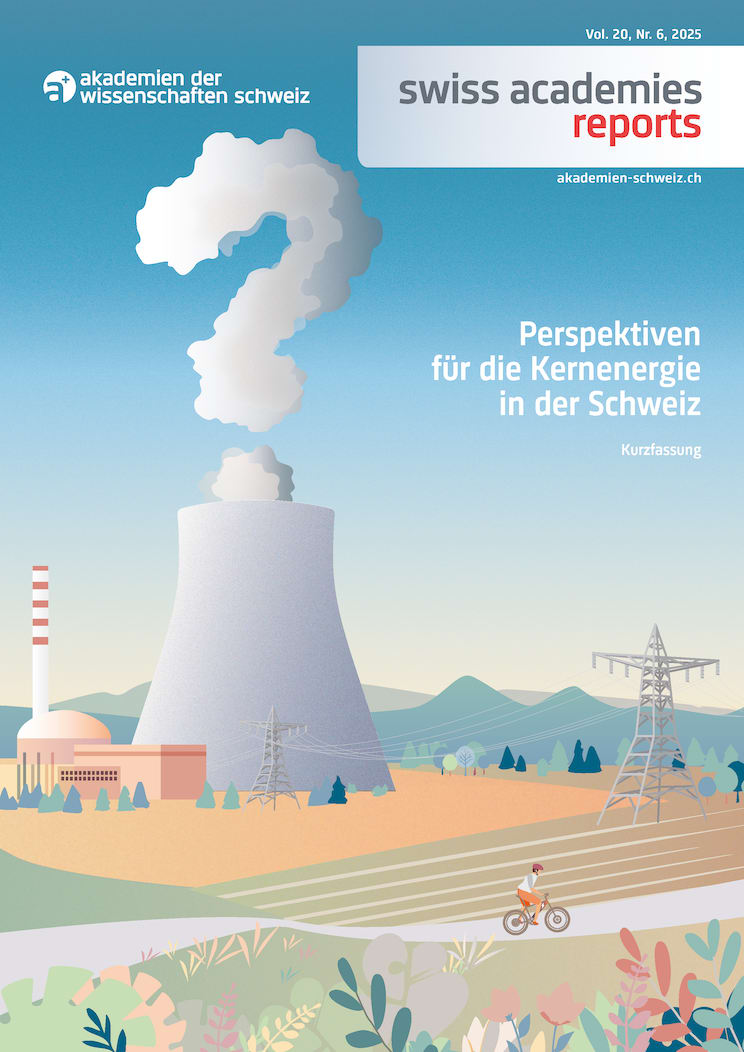
Perspektiven für die Kernenergie in der Schweiz - Kurzfassung
Neu U, Markard J, Betz R, Boulouchos K, Pautz A, Stadelmann I (2025)
Perspektiven für die Kernenergie in der Schweiz. Kurzfassung.
Swiss Academies Reports 20 (6)

